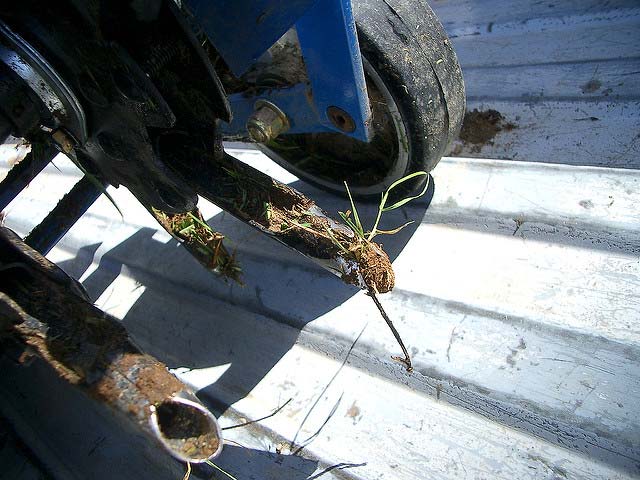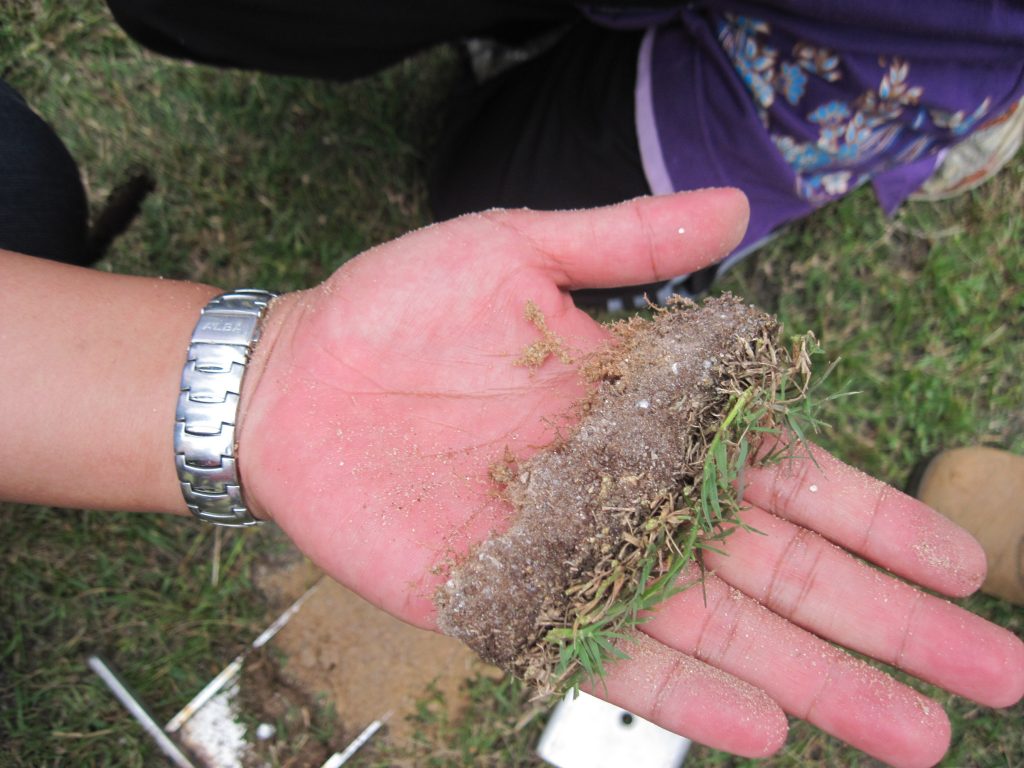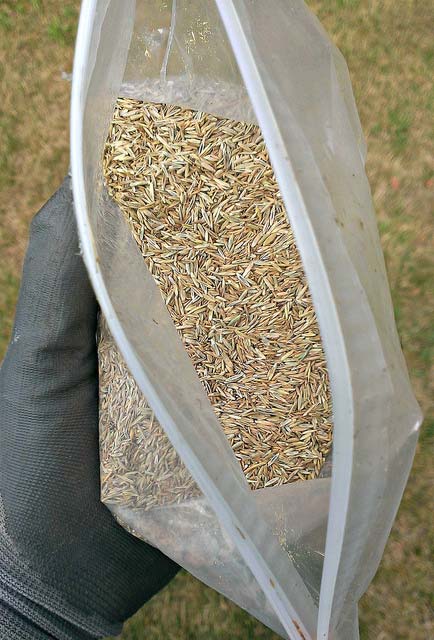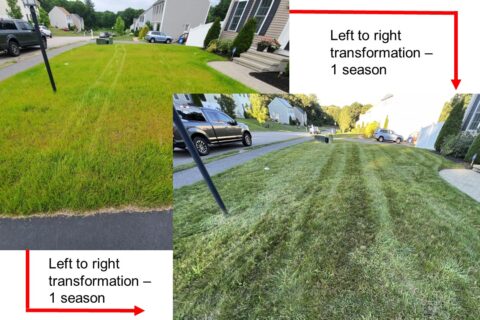What should you never do to your lawn in the spring?
Before you know it, warm weather will be pushing out the cold, winter air, and you’ll be outside working in your yard. Here are a few lawn maintenance activities to reconsider doing in the spring:
1. Aerate

Often, people get excited to work on their lawns in the spring – especially if their yard was in rough shape the year prior – and they’ll typically do anything and everything to help it grow into a thick, green carpet as soon as possible.
Here’s the problem with that approach: Aerating in the spring could actually hurt the lawn more than help it. While aerating does relieve soil compaction – enabling roots to more easily obtain fertilizer, water, and air – it could also cause it to dry out quicker. A stressed lawn is more prone to being invaded by aggressive weeds, such as crabgrass, and damaged by summer drought. It can also disturb crabgrass pre-emergent barriers. The only time you might consider aerating in the spring is if you can do so before applying pre-emergent and if you can administer enough water to break down the plugs and fill in the holes. However, it can be difficult to time all of these actions and get the pre-emergent down on time.
Cool season grasses grow best in cool weather and when days and nights are chilly, morning dew is present, annual weeds are dying, and rain is prevalent but not overbearing. These conditions usually take place early to mid-fall.

2. Dethatch
Dethatching, like aerating, can help your lawn… if it’s done at the right time of year.
Often, we’ll see people s take a multipronged approach to revive struggling turf. They’ll dethatch the same areas of grass several times, aerate them over and over again, and then disperse seed. However, more often than not, they fail to grow a thick lawn.
Why you shouldn’t detach in the spring.
Dethatching helps to remove thatch from your lawn. Thatch is a intermixed layer of dead and living roots, leaves, and stems that accumulate between actively growing grass and the soil underneath.
Some thatch benefits turf, but too much can inhibit precious nutrients, water, and air from penetrating to the root system.
Removing excess thatch is necessary, but only do so in the fall. Dethatching can stress turf because the verticutter’s blades slices through the soil. If done too early in the year, the turf may struggle to recover before the demanding summer sun rolls in and dries it.
If dethatching is done in the fall, lawns have the proper amount of resources and time to recover before winter. Autumn’s nights and days are cool, morning dew is present, and turf doesn’t have to compete with intrusive weeds because they’re dying out.
Finally, dethatching only needs to be done every once in a while. Under most circumstances, you won’t need to dethatch every year because your yard simply won’t produce enough thatch to warrant the procedure.
Keep in mind, there is a difference between dethatching and power raking your lawn, which we cover in another blog.
3. Seed extensive areas of your lawn

When you seed in the spring, seedlings are likely to grow. However, they’re less likely to become fully established for a several reasons:
- Noxious annual and perennials weeds grow much quicker than cool-season grasses, and they consume water and nutrients that otherwise would go to seedlings. These weeds also block needed sunlight that contributes to photosynthesis, which helps plants process fertilizer.
- Spring diseases stress (and can kill) young, weak grass blades.
- Hot, dry weather curbs blade growth because water is less prevalent. Homeowners may also find it more difficult to water lawns because many towns impose watering restrictions.
- Crabgrass – a weedy grass that suffocates cool-season grasses – is more likely to grow freely. This happens because people can’t distribute crabgrass control right before and immediately after they disperse grass seed. The crabgrass control will actually obstruct seedlings from developing.
There is, as always, one exception to seeding in the spring, and it’s this: It’s generally OK to fill in a couple of small bare patches with seed because small areas are much easier to maintain than an entire property. Just keep in mind that small areas are still subject to the same stressful conditions noted above. Because of this, we suggest setting your expectations low and understanding that you may have to reseed in autumn.
We service many towns in Norfolk County, Mass. including Foxborough, Mansfield, Sharon, Walpole, Norwood, Westwood, Norfolk, Medway, Millis, Medfield, Dover, Sherborn, and surrounding towns. For more information contact us today.
Your trusted lawn care provider and lawn pest exterminator
We Service Areas of Norfolk and Bristol County, Massachusetts Including, Foxborough, Mansfield, Wrentham, Walpole, Plainville, Franklin, Norfolk, Sharon, North Attleborough, and Parts of Attleboro, Stoughton, Canton, Norwood, Norton and Medfield. Learn more about our Complete Lawn Care program.


